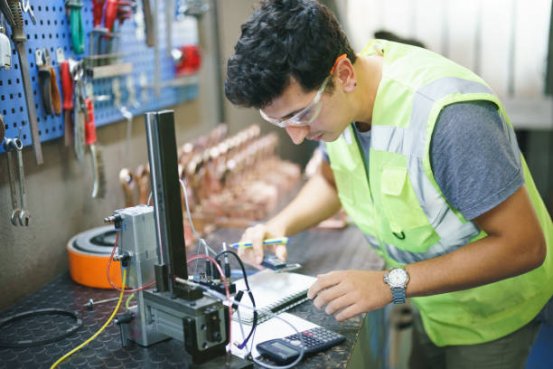Metal Integrity: Pushing the Boundaries of Metallurgical Testing
Metallurgical testing is a cornerstone of material science, ensuring metals meet performance, safety, and durability standards, supporting industries from aerospace and automotive to infrastructure and construction projects.
Metallurgical testing is a cornerstone of material science, ensuring metals meet performance, safety, and durability standards, supporting industries from aerospace and automotive to infrastructure and construction projects.

The Significance of Metallurgical Testing
1. Ensuring Material Performance
Metallurgical testing involves in-depth analysis of metals’ physical and chemical properties to confirm they comply with stringent quality standards. This testing minimizes risks, prevents structural failures, and ensures consistent material performance in challenging applications.
2. Cross-Industry Applications
From designing and manufacturing aircraft components to constructing durable infrastructure and automotive parts, metallurgical testing guides material selection, predicts longevity, and verifies adherence to international standards. This oversight enables organizations to maintain reliability, quality, and competitiveness.
Foundations of Metallurgical Testing Systems
Advanced equipment and scientific methodologies form the backbone of metallurgical testing, delivering accurate and repeatable evaluations. Common tools include spectrometers, tensile testing units, polishing equipment, and high-resolution microscopes, collectively providing detailed insights into material behavior.
Core Testing Methods and Equipment
1. Spectrometers for Accurate Elemental Analysis
Spectrometers precisely determine the chemical composition of metals and alloys, forming a critical component of quality assurance and material selection processes.
2. Metallurgical Property Evaluation
Hardness tests, microscopy, and microstructural assessments measure toughness, ductility, and wear resistance, which are vital for engineering design, performance optimization, and safety assurance.
3. Polishing Units for Sample Preparation
Polishing machines generate smooth, defect-free surfaces required for microscopic inspections, allowing detection of minor flaws that may impact performance.
4. Comprehensive Laboratory Toolsets
Laboratories equipped with furnaces, hardness testers, and microscopes support full metallurgical evaluations, essential for research and development, certification, and adherence to industrial standards.
5. Tensile Testing Equipment
Tensile testers apply controlled loads to metals to evaluate elasticity, yield strength, and deformation limits, providing critical data for ensuring product safety and mechanical reliability.
6. Metallurgical Accounting Systems
These systems track material usage and production flow, improving efficiency, reducing waste, and maintaining accurate records for regulatory compliance and quality assurance.
7. Independent Testing Services
Specialized laboratories offer detailed metallurgical analyses to assist industries with quality control, certification, and innovation initiatives, providing unbiased evaluations and expert insights.
8. Continuous Quality Assurance
Routine testing verifies that metals retain required properties, allowing timely corrective actions when deviations occur to maintain product integrity and reliability.
The Role of Metallurgical Laboratories
1. Regional Facilities
Local labs reduce transportation costs, expedite evaluations, and provide services such as failure analysis, microstructural characterization, and validation using advanced instrumentation.
2. MTS Testing Services
MTS offers tailored metallurgical solutions across aerospace, automotive, and construction industries. Services include assessments of durability, environmental resistance, and mechanical performance, while strictly adhering to regulatory standards.
Equipment Overview
| Equipment | Function | Features | Use Case |
| Spectrometer | Elemental composition | High accuracy, rapid results | Quality assurance, alloy selection |
| Tensile Testing Unit | Strength and elasticity | Controlled load application | R&D, product reliability assessment |
| Polishing Machine | Sample preparation | Adjustable polishing levels | Microstructure examination, defect detection |
Emerging Innovations in Metallurgical Testing
1. AI and Automation
Automation streamlines testing procedures, reduces human error, and, when combined with AI-driven analytics, enhances predictive capabilities and data interpretation accuracy.
2. Advanced Non-Destructive Testing (NDT)
Innovative ultrasonic and radiographic techniques allow detailed inspections without damaging samples, ensuring both quality verification and sample preservation.
3. Sustainable Testing Practices
Eco-friendly metallurgical testing approaches reduce environmental impact while maintaining high precision, repeatability, and compliance with industry standards.
Frequently Asked Questions
What is the purpose of metallurgical testing? To verify that metals meet required safety, durability, and performance standards for their intended applications.
How do spectrometers work? They measure the light spectra emitted by a metal sample to determine its precise elemental composition.
Which industries rely most on metallurgical testing? Aerospace, automotive, manufacturing, and construction sectors heavily depend on these systems.
Can testing be conducted on-site? Some evaluations are possible in the field, but comprehensive analysis usually requires laboratory conditions.
Are training programs available for professionals? Yes, multiple courses and certification programs are offered to develop expertise in metallurgical techniques.
Conclusion
Metallurgical testing systems are indispensable for ensuring the quality, safety, and reliability of metals while supporting innovation across industries. With rapid advancements in AI, automation, NDT methods, and sustainable practices, these systems are positioned to deliver improved precision, efficiency, and dependability, addressing the evolving demands of modern engineering and industrial applications.
References
